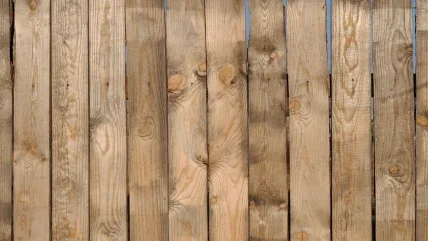
While no-one has a crystal ball, the Italian wood-based panels sector could be looking at some more positive economic signs as we head into 2024, following 18 months of difficult markets caused by a drop in customer demand and record cost increases.
The Italian panels sector – rated as the third largest panels industry in the EU after Germany and France – experienced aggravated operating conditions in 2022 and 2023, with the Russian-Ukranian war complicating things and causing more inflationary pressures.
Italy secured 40% of its gas imports from Russia before the conflict started, with this rate halving in 2022.
As has happened across Europe, domestic demand for furniture and building panel products has been suffering. That led to the overall decline of sales of panels both in export and especially domestic markets.
The additional factor of the end of a period of pent-up demand, as one of the consequences of the Covid-19 pandemic, has exacerbated the situation.
Still, despite the market gloom, there have been signs in recent months that the situation has generally stabilised, providing optimism among some of Italy’s major industry players for a return to better market conditions sometime in 2024.
The Italian panels’ market is largely dominated by medium-sized businesses, along with major domestic players and global majors.
Most of these companies and their production facilities are located in the northern part of Italy, between Friuli Venezia Giulia, Lombardy, Piedmont and Emilia Romagna, with 27% of the total, but their regional distribution is quite homogeneous.
In 2023 many of them were faced with a significant decline of orders, although since the second half of 2023 the situation has arguably begun to moderate.
Last year, the costs of wood, energy and raw materials declined, but market leaders, among which are Fantoni, Saviola and Kastamonu, have still expressed serious concerns about the weakness of the very large Italian furniture sector – one of the major consumers of panels in Italy.
According to local panel producers, the share of energy costs in the overall structure of costs had declined from 60% in 2022-2023 to the average of 30%, which is, however still higher than the pre-crisis figures of 20%. Italian panel producers were also faced with a sharp rise in urea prices, which even forced some of them to suspend their production for some time.
Panel prices have increased, leading to some questions about the competitiveness of Italian furniture industry exports on global markets.
Alessandro Saviola, chairman of Saviola Group, one of Italy’s leading panels producers, recently gave an interview with Italian media. The report said Italy and its panels’ sector demonstrated generally better results than the German sector and European market during the Covid-era crisis.
Mr Saviola mentioned his company had activated important foreign channels on new non-European markets.
While producers have tried not to pass on extra costs to the final consumer in 2022-23, the growth of final product prices is still ongoing.
Particleboard prices in Italy have grown to around €300/m3, while MDF has been at around €500/m3, higher than a year ago.
While the Italian furniture sector is able to absorb these prices, the level of competition from North American and Asian furniture producers is growing and there is a possibility that lower costs at their factories will allow them to be more competitive with their Italian rivals.
Another issue concerns availability of wood raw material. There is some chatter about shortages of raw materials putting pressure on the industry in 2024.
Paolo Fantoni, president of Assopannelli (the Italian Association of Panel and Semifinished Wood Products Manufacturers), and CEO of Fantoni SPA, made some comments on this latter point in a recent interview in the Italian Nordest Economia business paper.
He was quoted as saying that one of the solutions to deal with the shortage of raw materials was greater use of the Italian forest resources.
One example quoted was the Friuli Venezia Giulia region, one of Italy’s five autonomous regions with special statute, with reserves equal to 1 million m3 of wood per year.
In general, Italy has approximately 11.1 million hectares of forest, which cover 36% of the national territory, some 3.5 million hectares of which are located in protected areas.
At the same time, the constant growth in demand for wood for burning (for energy purposes) represents competition for the fibre.
Prior to 2021-2022, as much as 98% of the panels produced in Italy were made from recycled wood, making Italy the European leader in this field.
However, supplies of recycled wood for the needs of the industry have reportedly been under pressure, forcing producers to keep an eye on the situation and be alert to possible alternative sources of raw materials.
In terms of expansions and investments within the country’s panel sector, the global majors have significantly strengthened their positions in recent years.
An example of this is Kastamonu – the fourth largest chipboard producer in Italy, which continues an expansion of its flagship Italian factory in Pomposa in the Emilia- Romagna region.
The company purchased the site, formerly belonging to Gruppo Trombini, in 2017, re-opening the facility the following year.
At present the factory is estimated to have a production capacity of 450,000m3. According to general director of the factory Esat Osoguz, plans include increasing the capacity to 600,000m3.
The plant is on continuous production cycle 24/7. In 2023, the company invested more than €30m in the expansion of the plant, most of which was allocated in the building of a new large-scale warehouse.
In the meantime, another global giant – Kronospan – in recent years has made serious efforts to expand its presence in Italy. That was primarily in the form of building production facilities, which, similar to other countries in Europe, was also faced with the resistance of local population and authorities.
For Kronospan Italy, with headquarters in San Vito, the company has been trying for some time to build a new factory in the Ponterosso industrial area to produce chipboard panels. However, due to various legal disputes, the timing of the project has been seriously delayed.
According to some Italian media reports, the company has finally been able to get the needed permissions for the building of the plant, which could see some activity in 2024.
The cost of the project is estimated at more than €280m, creating hundreds of new jobs. The new plant is projected to be one of the largest Kronospan facilities in western Europe.






